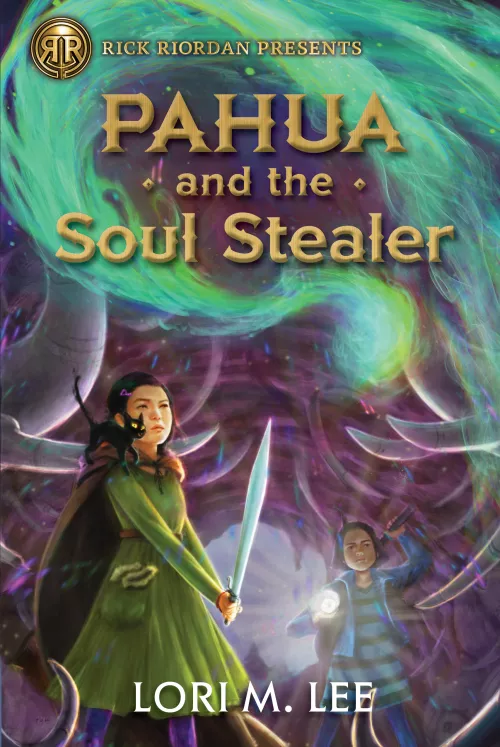Share this book
In Pahua and the Soul Stealer, Pahua crosses into the spirit world to find the bridge spirit to free her brother and in doing so, makes a transformative discovery about her own history before returning to rescue her brother. Pahua’s journey is the hero's journey, a monomyth or archetype in stories. The monomyth, according to author Joseph Campbell, is a cycle that includes three big stages—separation, initiation, and return, with several substages within each one. Review the hero’s journey with students and discuss how the book follows the monomyth and what parts of the story show the cycle.
Have students identify a scene or passage specific to each stage in the cycle and create a graphic panel for each one. Students can work in pairs or individually to develop a comic strip of Pahua’s entire journey. Ask students to use their work to discuss and compare Pahua’s hero’s journey with heroes in other films or books they’ve read.
Questions for Discussion or Reflective Writing
- Pahua has never gotten a good explanation about why her father left and even though she doesn’t talk about it, it bothers her. Why do you think Pahua keeps these feelings to herself? How do you think you would feel if you were in Pahua’s position?
- Pahua has kept secret the fact that she can see spirits. And though her aunt is a shaman and her mother performs minor rituals, Pahua doesn’t tell her mother what she knows to be really wrong with Matt. Do you think Pahua’s decision to keep things from her mother is a good one? Why or why not?
- When Pahua meets Zhong, she’s not sure if she likes her. Miv doesn’t trust Zhong. Why do you think Pahua trusts her? How does Zhong feel about Pahua? Though they have very different backgrounds, what feelings and fears do they have in common?
- Pahua often seems to surprise herself that she’s able to find ways to solve problems. How does Pahua grow throughout the story? What contributes to her growth? How does she see herself by the end of the book?
Related Resources
- The Split Horn: Life of a Hmong Shaman In America and more about the film
- Hmong Shamanism from ReligionsMN
- Hmong Museum
- What makes a hero? from TED Ed
- The Monomyth (The Hero's Journey) from GVSU Libraries
More Titles to Try
Stay on top of current education news



